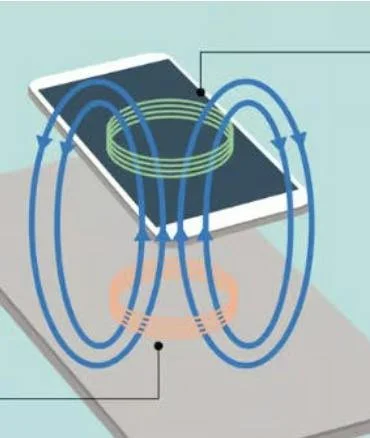How does NFC work? Explained!
Hey friends, Happy Wednesday!
I go to work using the public trains. And every single time, I make contactless payments using my phone by enabling NFC (Near Field Communication). So naturally, I’ve been curious for a while to understand how it exactly works. Now I know and so do you!
I’ve simplified how they work to be more readable. I aim to write my newsletter issues in a way one can follow them while traveling on a bus, having a coffee, waiting for your food, etc. Let's jump in!
Tweet of the week
I’m sharing a cool fact about gadgets every day on Twitter. And here is one of them for you
What is NFC and its uses?
Figure 1: NFC tag with conductive coils and antenna
NFC is a method to transfer small amounts of data between devices close to each other. It is faster than Bluetooth or WiFi as you don’t need to take the time to manually search & pair or enter passwords.
Just a close proximity of less than 4 inches between the devices would do, for them to be connected. The transfer is completely wireless and there is no need for network connectivity. It is used for making contactless payments at the terminal using your card or phone like Apple Pay, etc. I’ll take this as an example to explain how this works. Though there are other modes and use cases for NFC like Bluetooth and WiFi pairing.
How does NFC work?
Figure 2: Simplified phone and payment terminal - electrical coils and magnetic field
I wrote a newsletter a couple of weeks ago on Wireless charging. NFC uses the same core principle but I’ll recap and go over it again. You can also read it HERE if you’re interested.
For NFC, your phone has a circular electrical coil in it through which alternating current flows.
You have stored your credit card information manually on the payment app, which is encrypted. So now, the properties like the amplitude, frequency, and phase of the alternating current can be modulated to encode the data of your credit card. This is similar to how Bluetooth (last week’s topic in my newsletter) sends a radio wave of different frequencies to represent a 1 vs a 0.
A corresponding varying magnetic field is generated around the circular coil of your phone where alternating current is flowing. (Principle: Constant current around a coil produces a constant magnetic field around it). This field carries your card’s necessary data stored in the app.
On the other side, the NFC-enabled payment system also has a circular electrical coil. The varying magnetic field from your phone induces a current in the coil of the payment terminal (Faraday’s law of electromagnetic induction) when they’re brought in close proximity to each other. Using the properties of the induced current, the payment terminal decodes the data sent over for processing the transaction.
Different communication protocols need different procedures. Generally, the payment terminal sends a command to the phone once the NFC connection is established by the phone. The phone then processes the command and prepares the necessary secure data of the card details to be sent over. This is how NFC works for making contactless payments.
Question of the week
How do you think is RFID different from NFC? Reply to this email with your thoughts, and we’ll have a discussion.
Thank you for reading!
Have a nice rest of the week, and take care!
Until next Wednesday,
Chendur


